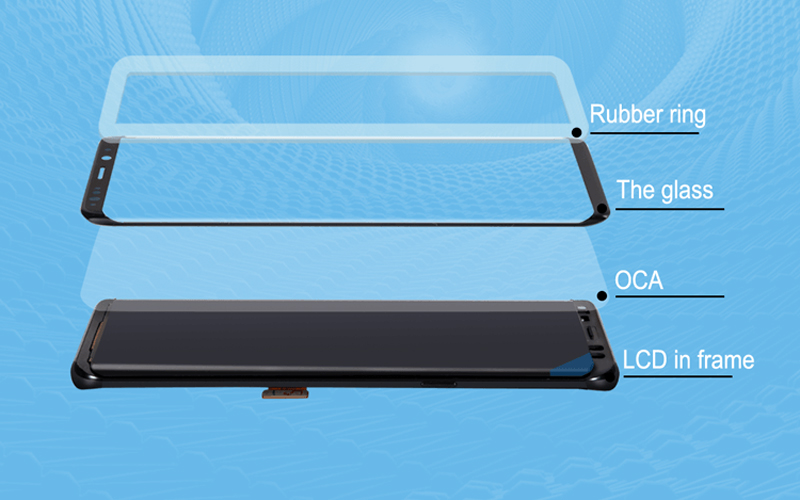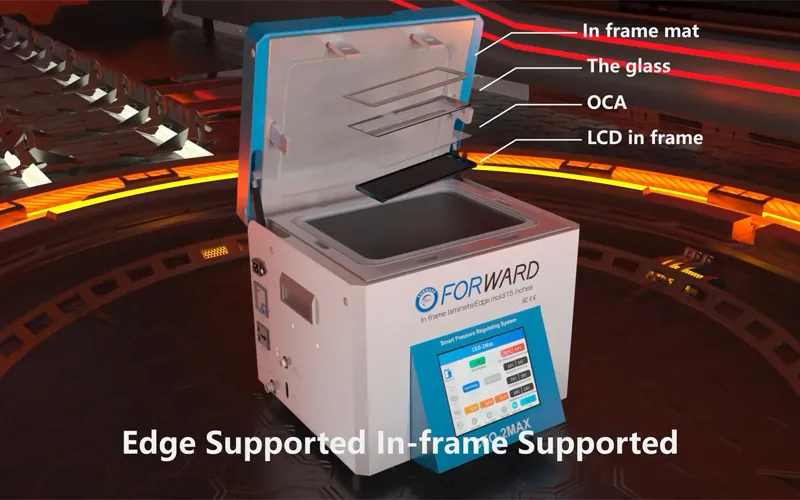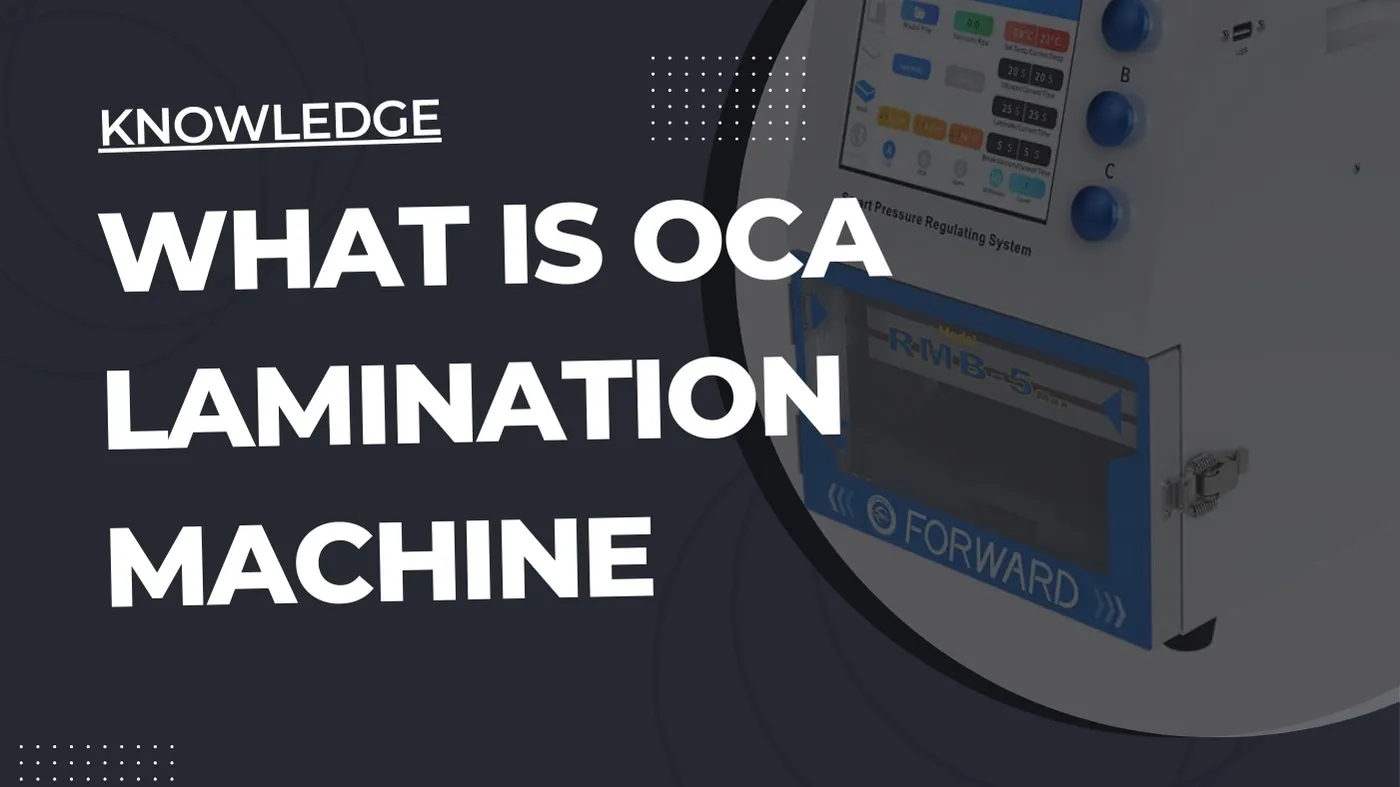Introduction
The mobile device repair industry has seen tremendous growth over the past decade. As more people rely on their smartphones and tablets for work, communication and entertainment, the demand for quality and cost-effective repair services continues to rise.
One OCA machine that is revolutionizing the repair process is the OCA laminating machine. OCA, which stands for Optically Clear Adhesive, is a specialized laminating technology that allows for seamless, bubble-free application of new screens during device repair.
OCA laminating machines are quickly becoming an essential piece of equipment for repair shops looking to improve efficiency, reduce costs, and provide top-notch refurbishing services to customers. This guide will provide repair shop owners with a comprehensive overview of OCA film laminating machines – from understanding the technology to leveraging its benefits to best practices for optimal results.
Understanding OCA (Optically Clear Adhesive)
So what exactly is OCA and why is it useful for device repair?
OCA is an optically clear, liquid adhesive film that allows new display components to be laminated onto existing device frames seamlessly. The liquid state of OCA enables it to fill microscopic gaps, preventing air bubbles that are common with traditional adhesive methods.
Once cured with UV light, OCA dries completely transparent, ensuring perfect optical clarity for the new screen and maintaining the device’s original high-definition viewing experience. It also provides an extremely strong bond between components.
The key difference between OCA lamination and traditional repair methods lies in the application process. Manual machine glue applicators are more prone to alignment errors, leaks, and bubbles during bonding. The automated OCA laminating machine eliminates these issues through a calibrated, software-controlled procedure, enabling rapid and precise screen attachment.

“With traditional glue methods, screen replacement was tedious and imprecise,” says Forward Machine founder Aamir. “Tiny air gaps would ruin displays, limiting our options. With OCA lamination, we reduced replacement costs while achieving near-perfect results every time.”
How Does an OCA Lamination Machine Work?
OCA laminating machines like the Forward CEO-2 Max consist of several key components engineered to facilitate precision bonding:
- Built-in Vacuum Pump: Provides a vacuum environment in the laminating area, effectively preventing bubble formation and ensuring better lamination results.
- Built-in Air Compressor: Delivers stable pressure to ensure optimal pressure levels during lamination, improving the overall quality.
- Four Parallel Guide Rails: Distribute the laminating pressure evenly across the screen, significantly enhancing the lamination effect.
- Built-in Heating System: Maintains a constant, appropriate temperature to speed up the lamination process, further optimizing efficiency.

Here is how techs use the CEO-2 Max and other similar OCA machines during a typical phone screen replacement:
- Use an LCD separator machine to easily separate the damaged phone screen from the shattered glass cover.
- Using a specialized OCA alignment mold, align the new glass cover with the OCA film, ensuring it’s ready for lamination.
- Thoroughly clean the LCD to ensure there is no dust or debris.
- Place the cleaned LCD and the aligned OCA into the lamination area of the OCA Machine.
- Start the lamination process. The CEO-2 Max will precisely laminate and remove bubbles according to the preset program.
- Wait for 3-5 minutes to complete the perfect lamination.
- Reinstall the repaired screen back into the phone, and the screen will look as good as new.
Executing this process would take a technician 30-50 minutes manually. The programmed precision of an OCA laminating machine reduces full replacement to just 3-5 minutes while eliminating human errors.
Benefits of Using an OCA Lamination Machine in Your Repair Shop
Integrating OCA lamination technology through automated machines provides wide-ranging benefits for repair shops:
Faster Repair Times and Improved Efficiency
The software-controlled automation of an OCA film laminating machine significantly shortens total device repair time compared to manual methods. As described previously, full LCD/OLED screen replacements are completed 3-6X faster. With the ability to reliably produce more repairs daily, shops experience dramatic productivity increases.
“With our old manual process, complex replacements took 40-60 min,” explains Thompson. “By leveraging our OCA machine, we can now complete most repairs in under 10 minutes.”
Higher Quality Results
Manual OCA gluing or machine glue applicators consistently suffer from leakage, bubbles and misalignment during bonding. The calibrated precision of automated OCA laminators essentially eliminates these defects, leading to superior quality repairs with minimal redos. Customers provided flawlessly restored devices are far more satisfied.
Reducing Screen Replacement Costs
The high precision and speed of automated OCA systems allows repair shops to take on more replacement jobs at lower quoted prices. Reduced wasted materials and man-hours offset the machine’s upfront expense for significantly improved business profit margins over time.
Javi V. Guzman confirms the financial benefit of adding an OCA machine: “The RMB OCA machine paid for itself in just 1 month with our increased monthly revenues from higher turnover. The best business decision we’ve ever made.”

Types of OCA Lamination Machines for Different Repair Needs
When investing in an OCA laminating machine, shop owners must consider options to match their facility’s size and repair specialization.
- Fully Automatic OCA Lamination Machines
These high-efficiency machines offer complete automation, typically laminating screens in 30-40 seconds. Key features include pressure adjustment, speed control, and built-in vacuum pumps. Ideal for professional repair shops, models like the CEO-2 Max stand out for their advanced technology and user-friendly interface, supporting all smartphone brands, including iPhones and Samsung.
- Semi-Automatic OCA Lamination Machines
Offering partial automation with manual input, these affordable machines feature basic pressure control and manual film feeding. They’re a good choice for smaller repair shops or beginners, capable of handling a range of devices but less efficient than fully automatic models.
- Edge OCA Lamination Machines
Designed for edge-to-edge screens, these machines ensure seamless lamination without air bubbles. Equipped with enhanced bubble removal and precise pressure control, models like the RMB-5 Edge OCA Lamination Machine deliver excellent results on curved displays.
- Bubble Removal Machines
Although not lamination machines, bubble removers are vital for achieving a professional finish by eliminating air bubbles formed during lamination. These high-pressure systems are essential for quality control in the final product.
- Portable OCA Lamination Machines
Compact and mobile, these machines are perfect for quick, on-the-go repairs. While they offer basic laminating functions with less automation, they are ideal for small workshops or mobile repair services.
When gauging the appropriate OCA laminating machine specification for your shop, consider your shop’s average monthly intake. Touch capability needs are dependent on device mix trends. Lastly, we plan for emerging advanced display technologies like foldable screens.
Investing in an OCA Lamination Machine: Is It Worth It?
For shops producing high volumes of phone repairs, investing in an OCA film laminating machine makes excellent financial sense:
Cost Analysis
OCA machines represent a significant upfront capital expenditure, often between $900-$2,500 depending on specifications. However, when factoring the long-term savings from reduced technician time, lower material waste and higher repair margins, most shops experience full ROI payback in less than 2 months.
Increased Shop Revenue
The operational efficiencies and superior quality results enabled by OCA equipment directly translate into larger monthly profits. Case studies from OCADB customers showed average revenue increases between 120-150% post-machine installation.
For owners conversant with lamination, the proven benefits typically overshadow any ROI uncertainty. Most consider OCA machines as advanced equipment securing their shop’s future competitiveness.
Conclusion
As the demand for professional and cost-effective mobile device repair continues expanding, repair shop owners must equip their operations appropriately. Implementing dedicated OCA lamination technology through automated machines helps position shops to meet rising volumes while delivering exceptional quality.
By boosting technician productivity, minimizing materials waste and enabling high-margin repairs, OCA laminators provide shop owners both financial and competitive advantages within the rapidly evolving industry. This guide aimed to fully educate repair business owners on leveraging these machines for profitability. OCADB is here to support you in equipping your shop with the right tools to succeed.

